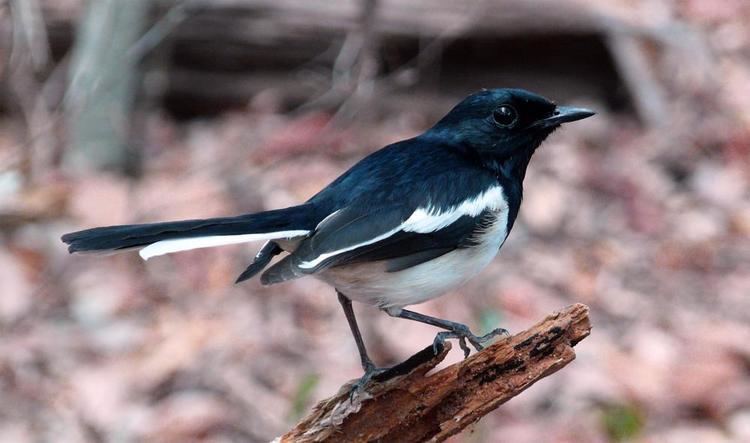Kingdom Animalia Family Muscicapidae Scientific name Copsychus albospecularis Higher classification Copyschus | Order Passeriformes Genus Copsychus Phylum Chordata Rank Species | |
 | ||
Similar Bird, Seychelles magpie‑robin, Forest rock thrush, Littoral rock thrush, Benson's rock thrush | ||
The Madagascan magpie-robin (Copsychus albospecularis) is a species of chat in the Old World flycatcher family Muscicapidae. It is also called the Madagascar magpie-robin. It is closely related to the Seychelles magpie-robin and the Oriental magpie-robin, and may form a superspecies with them. The species is endemic to Madagascar, where is is founds across the island. Its distribution is sometimes scattered as it occupies a wide range of habitats and can be very common or fairly rare depending on this. Three subspecies have been described, the nominate subspecies, from north-east Madagascar, C. a. inexpectatus , from eastern and south-eastern Madagascar, and C. a. pica , which occupies the rest of the country. There is however considerable overlap between the subspecies and the exact boundaries between the subspecies is unclear.
The Madagascan magpie-robin is 18 cm (7.1 in) in length and weighs 21 to 24 g (0.74–0.85 oz). The plumage varies by sex; the male of the nominate subspecies has all-black plumage with a white shoulder patch and the female has a grey-brown crown, back and tail, grey-breast and throat and rufous wings and rump. The males of the other subspecies have more white of the wings and a white abdomen, the female of C. a. pica is much paler overall.
Madagascan magpie-robins occupy most of the habitats available on the island, from scrubland to dry monsoon forest, humid rainforest, forest edge, mangrove forests, secondary growth, as well as a variety of agricultural land including gardens, banana, coffee and eucalyptus plantations. They can be found from sea-level to 1,800 m (5,900 ft).
The Madagascan magpie-robin feeds in insects, including cockroaches, beetles, bugs and grasshopers, as well as spiders, earthworms, small lizards and amphibians. They will also take berries. They forage near the ground, and exhibit some niche differentiation between the sexes, with females feeding more regularly on the ground and males feeding higher up n the undergrowth. They also sometimes join mixed-species foraging flocks.
Madagascan magpie-robins are territorial, with pairs defending territories that vary in size depending on habitat type, ranging from less that 1 ha (2.5 acres) to 6 ha (15 acres). Territories in heavy rainforest or moist montane forest are smaller than those in scrubland. The nest is a cup made from grasses, leaf stalks and lined with rootlets, snakeskin and the hair of lemurs or cattle. The nest is placed in cavities in walls, in stumps or dense vegetation. An average clutch size is three eggs (the range is from two to five) are laid and incubated for 13 days. Both parents feed the chicks in the nest for 17 days, and continue to be fed outside the nest for at least 6 days. Chicks may associate with their parents in small flocks for at least 18 days after fledging. This species is often targeted by the Madagascan sparrowhawk.
